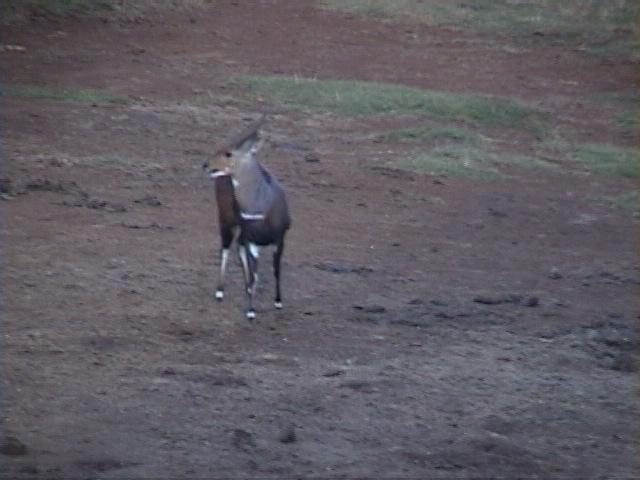|
(P:\Africa\VideoStills) Dn-a1059.jpg (Bushbuck, Tragelaphus scriptus)
| 제목: | (P:\Africa\VideoStills) Dn-a1059.jpg (Bushbuck, Tragelaphus scriptus)
| | 올린이: | Darren New (dnew@san.rr.com)
| |

| 파일크기 : 34479 bytes
File date : 2001:05:29 13:29:42
해상도: 640x480
Jpeg process : Baseline
Posted Newsgroups: alt.binaries.pictures.animals
Posted 촬영일: Tue, 27 Feb 2001 07:05:03 GMT |
Comments
========
From: dnew@san.rr.com (Darren New)
Subject: (P:\Africa\VideoStills) Index01.gif (0/1) (277 K)
Date: Tue, 27 Feb 2001 04:59:03 GMT
1007 is a candelabra cactus plant. They get around 40 feet tall.
1009 is my wife, who took many of the 35mm shots. :-)
The blackish pictures are actually pictures taken at night.
You might need to turn up your brightness to see them.
1069 and friends is a gennet, a kind of cat, photographed in
infrared, hence the odd color.
They feed him at the Ark, so he comes around at night.
I believe 1059 is a blesbok, which is a blue/purple antelope.
(Hard to tell with that lighting, I know.)
Kenya and Tanzania, Summer 2000.
Stills from digital video camera.
640x480 JPEG, mostly unretouched.
Missing numbers are due to chopping
out non-animal pictures (such as
scenery, plant life, etc.)
Released to the Public Domain,
but I would appriciate hearing about
commercial use of the photos.
-- Darren New.
|
댓글 |
|---|
| | Lourens Oosthuizen |
|
| Defenitely not a blesbok. This is a bushbuck. Smaller than a blesbok. The shape of the face is that of a bushbuck and also the shape of the horns. There is also no indication of a blaze on the forehead. |
| | Damien |
|
| I concur that this is in fact a Bushbuck. |
| | 손님 |
|
| The kéwel (Tragelaphus scriptus) is a small to medium-sized antelope widespread in west and central Africa. Formerly and alongside the imbabala it was generically known as the bushbuck, however, it has since been found to be a species in its own right, with a separate geographic distribution. |
^o^
동물그림창고 똑똑전화 누리집
^o^
|
|
|

